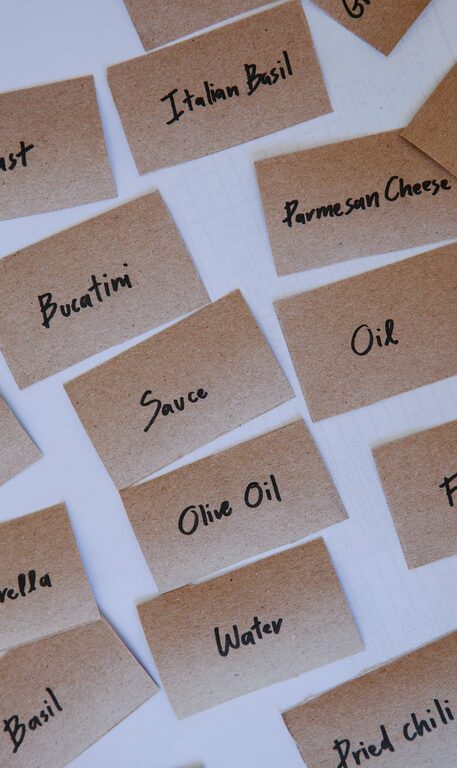
Creating a weekly meal plan doesn’t have to be complicated or time-consuming. With a little preparation and organization, you can enjoy stress-free cooking, save money, and improve your eating habits. Whether you’re feeding a family or just yourself, a simple meal plan can make your week smoother and more enjoyable.
In this post, we’ll guide you through the basics of creating a practical weekly meal plan that fits your lifestyle, helps you avoid last-minute decisions, and keeps your meals balanced and delicious.
Why Create a Weekly Meal Plan?
Before we dive into the steps, let’s quickly look at some benefits of meal planning:
– Saves Time: Knowing what you’ll cook each day reduces the daily “What’s for dinner?” dilemma.
– Saves Money: Planning helps you buy only what you need, reducing food waste and unnecessary purchases.
– Promotes Healthy Eating: You can balance meals with the right portions of protein, veggies, and grains.
– Reduces Stress: Preparedness makes busy days easier and mealtimes more enjoyable.
Step 1: Assess Your Schedule and Needs
Start by looking at your upcoming week. Consider:
– How many meals do you need to plan? Are you cooking all meals or just dinners?
– How much time do you have for cooking? Some days are busier than others.
– Who are you cooking for? Family members might have different preferences or dietary needs.
– Do you want leftovers or quick meals? Planning for leftovers can reduce cooking time on some days.
Write down your answers to get a clear picture.
Step 2: Collect Recipe Ideas
Next, gather recipes you enjoy and find easy to prepare. Use:
– Cookbooks or magazines
– Food blogs or apps
– Your own favorite dishes
Aim for a balance: include some quick meals, a few that can be cooked in bulk, and maybe one or two new recipes to keep things interesting.
Tip: Focus on recipes with overlapping ingredients to minimize shopping and simplify cooking.
Step 3: Create Your Weekly Meal Template
Create a simple chart or use a printable meal planner. Structure it like this:
| Day | Breakfast | Lunch | Dinner | Notes |
|———–|————-|————-|————-|—————–|
| Monday | | | | |
| Tuesday | | | | |
| … | | | | |
Depending on your goals, you might plan just dinners or all meals.
Step 4: Fill in Your Meal Plan
Use your recipe list and schedule to assign meals to each day.
– Balance flavors and cooking time: Avoid two heavy meals in a row.
– Plan for leftovers: Schedule a day for leftovers or use them creatively in a salad or wrap.
– Consider batch cooking: If you cook extra portions on one day, plan to eat them later.
Don’t forget to include easy meals for busy days, like sandwiches, salads, or simple stir-fries.
Step 5: Make Your Grocery List
With your meals planned, write down all the ingredients you’ll need.
– Organize your list by sections (produce, dairy, pantry, etc.) to make shopping quicker.
– Check your pantry and fridge first to avoid buying duplicates.
– Include staples like spices, oils, and basics if you need to restock.
Step 6: Shop and Prep
Head to the grocery store with your list. To save time later:
– Wash and chop vegetables
– Portion snacks or ingredients
– Cook grains or proteins in advance when possible
You can store prepped items in clear containers so they’re easy to find and use.
Tips for Successful Meal Planning
– Stay flexible: Sometimes plans change; swap meals if needed.
– Keep it simple: Don’t feel pressured to cook complicated meals every day.
– Use leftovers creatively: Turn roasted chicken into chicken salad or tacos.
– Get family involved: Let everyone pick a meal or help prep.
Sample 3-Day Meal Plan to Get Started
| Day | Breakfast | Lunch | Dinner |
|———|———————|————————|————————–|
| Monday | Oatmeal with fruit | Turkey sandwich + salad | Stir-fried veggies & rice |
| Tuesday | Yogurt & granola | Leftover stir-fry | Spaghetti with marinara |
| Wednesday| Smoothie bowl | Chicken salad wrap | Baked salmon & asparagus |
Conclusion
Creating a simple weekly meal plan is a practical way to improve your daily routine, eat better, and reduce dinner-time stress. It takes a bit of effort upfront but pays off throughout the week. Start small, keep it flexible, and enjoy the process of planning meals that nourish you and your family.
Happy planning and cooking!




